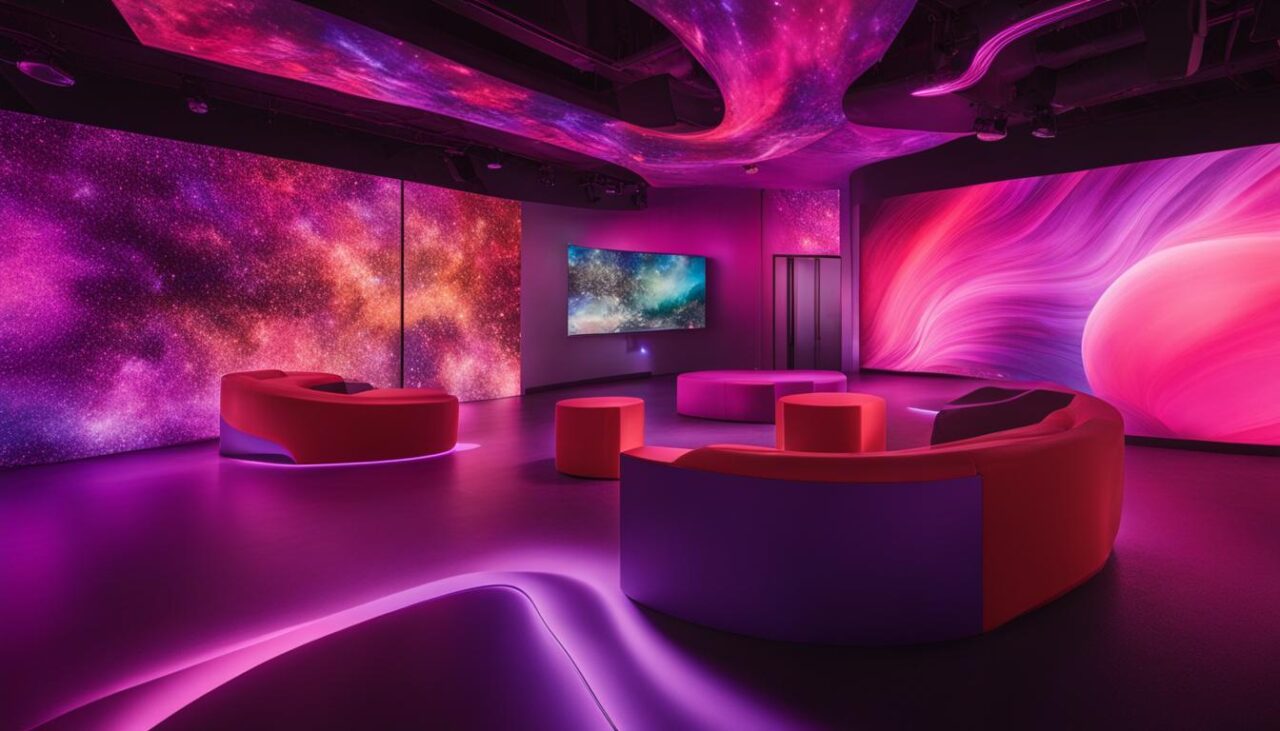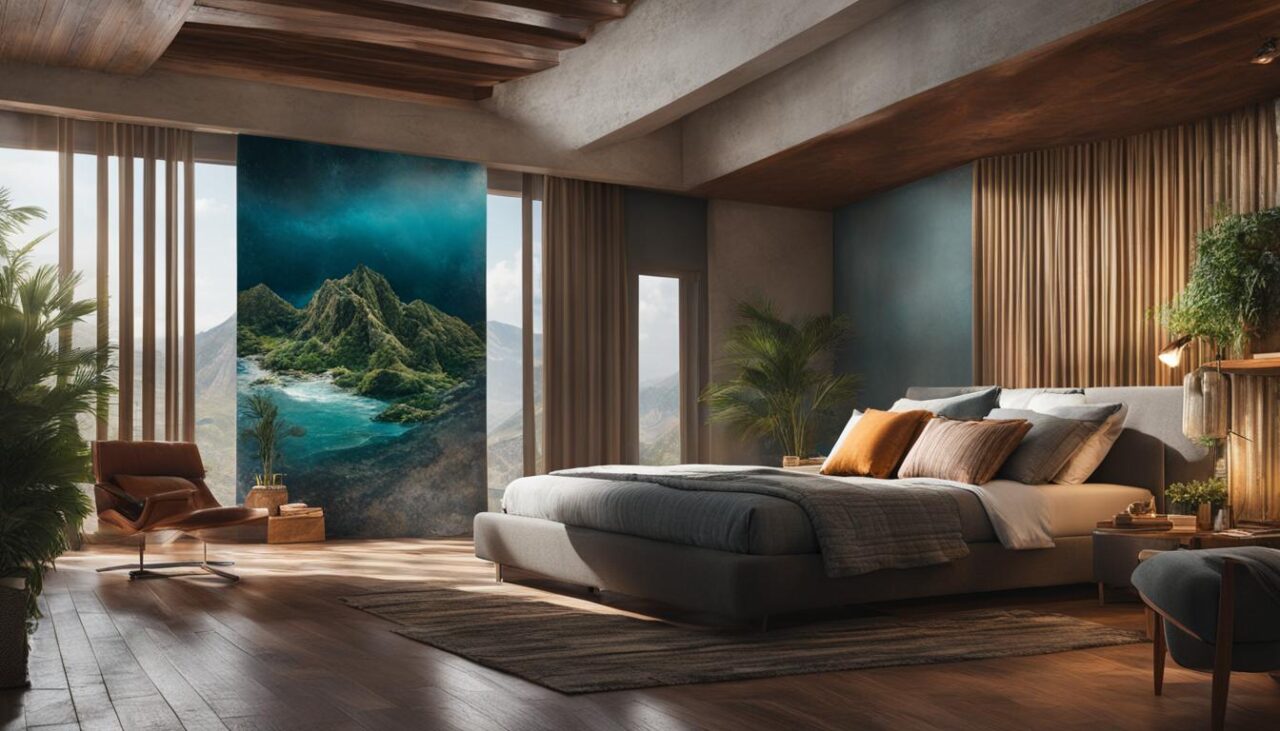In an era where experiential design sets the benchmark for exceptional user experience, there emerges a profound appreciation for design psychology—a foundation laying the bricks for aesthetic engagement that speaks directly to the soul. At the heart of such design lies an understanding that beauty is more than skin deep; it is a multi-sensory odyssey, rich in emotion and poised to stir the psyche.
Whether in a museum's hallowed halls or the streamlined elegance of a smart device, captivating aesthetic experiences rise from an intricate tapestry of design elements, each meticulously interwoven to engage, enliven, and endure. It is this alchemy of sight, sound, and sentiment that transforms the mundane into the magical, marking the moments that matter in the minds of those who encounter them.
Join us on a journey through the landscape of aesthetic engagement, where beauty is not just observed but is an immersive, interactive, and profoundly human experience.
Contents
The Role of Immersive Design in Aesthetic Engagement
Immersive design is more than just a buzzword; it's the vital ingredient that transforms a simple space into a realm of sensory aesthetics and artistic immersion. Harnessing this creative power, designers are able to weave together experiences that not only leave a lasting visual impact but also intimately engage visitors in their surroundings.
Principles of Immersive Design
Foundational to immersive design are the principles that guide every nuance of the environment crafted. Continuity, depth, and narrative play pivotal roles in constructing a seamless union between the user and the design. Interactivity, meanwhile, breathes life into the experience, making it an active dialogue rather than a passive encounter. These elements, meticulously blended, are the essence of creating an authentic immersive design.

Case Studies: Successful Immersive Experiences
Two exemplary case studies that showcase the impressive capabilities of immersive design are the Rain Room installation by Random International and the breathtaking Van Gogh Alive experience. Each offers a masterclass in how enveloping atmospheres can evoke powerful emotional reactions and forge a strong visual impact, providing visitors with a poignant and transformative artistic immersion.
“By submerging the audience in a downpour that pauses wherever a human body is detected, the Rain Room juxtaposes control and surrender—the very dance of human experience,” remarks the creator of the Rain Room. This encapsulates the intimate connection immersive design can cultivate.
How Immersive Design Fosters Connection
At its core, immersive design seeks to foster a deep connection by carving out shared spaces where collective experiences and memories can flourish. This emotional journey, embarked upon collectively, is what cements the relationship between a brand and its audience, or an art piece and its admirer.
The implementation of immersive design is an eloquent demonstration of how sensory aesthetics can evolve into a powerful emotional conductor, harmonizing the symphony of human experience within an array of aesthetic engagements.
Understanding Sensory Experience in Experiential Design
In the realm of experiential design, a compelling sensory experience constitutes the cornerstone of an unforgettable engagement. As we delve into this pioneering approach, we recognize the profound influence that sensory engagement has on shaping emotional connections and the overall narrative of an interaction. Crafting such experiences requires a meticulous integration of smell, touch, taste, sight, and sound, elevating the significance of sensory experience within the sphere of innovative design.

Integrating the Five Senses
The allure of a truly immersive environment hinges on the successful amalgamation of the five senses. Experiential design harnesses these sensory pathways to construct a rich tapestry of interactions that feel authentic and alive. The scent of a location can transport us, the texture can ground us, flavors can invigorate, visuals can captivate, and sounds can envelop us within a designed space.
Enhancing Emotional Resonance through Sensory Design
Emotional design pivots on the understanding that every sensory input has the potential to evoke a visceral response. By infusing sensory details with empathy and precision, designers have the powerful ability to elicit targeted emotional reactions that propel experiences from merely memorable to profoundly impactful. Sensory experience, in this context, is not just about perception; it's about kindling the emotional resonance that connects deeply with the human spirit.
Balancing Sensory Elements for Harmony
Finding the equilibrium between the elements of a sensory palette is essential to preventing sensory overload. The art lies in crafting an exquisite balance, where no one sense overshadows another, and all contribute to a harmonious symphony of experiences. This balance is a testament to the choreography inherent in the finest examples of sensory engagement, leaving a lasting impression that resonates on both a sensory and emotional level.
Integrating Emotional Design for Artistic Immersion
The essence of emotional design is to create a bond between the user and the design that goes beyond the mere visual or functional aspects. It's about engineering an emotional experience that captivates and immerses the user in the artistic narrative. By tapping into design psychology, designers translate emotions into color palettes, typefaces, and interactive elements that resonate with the viewer on a deeply personal level.

This fusion of art and emotion cultivates an artistic immersion that rivals the most poignant of human experiences. Consider the visual impact achieved when every aspect of a design is carefully chosen to elicit a response ranging from tranquil serenity to bubbling excitement. It's in these moments that users transform from passive onlookers into active adventurers, exploring a carefully crafted world that stirs the soul and ignites the imagination.
Emotional design is not just about how a product looks or feels; it's about the stories it tells and the feelings it evokes. It's design with a pulse, a heartbeat that echoes in the memories of those who encounter it.
When applied effectively, emotional design paves the road to artistic immersion—a state where users are lost in the narrative of the design, connected through the shared language of emotion. In turn, this creates a lasting impression that often defines the most memorable and compelling user experiences in our increasingly digital world.
Conclusion
The intersection of art and audience is a profound one, where the magic of aesthetic engagement leaves an indelible imprint. Captivating aesthetic experiences stand as testaments to the power of design to transform the mundane into the sublime, fostering strong emotional connections that endure. Beyond aesthetics, it is the amalgamation of user experience, design psychology, and immersive design that crafts this lasting legacy—a delightful ballet of sensory and emotional interplay that lingers in the mind and spirit.
Captivating Aesthetic Experience: The Lasting Impact
Through careful crafting of the environment and stimuli, these experiences envelop the user in an odyssey of sensation that eclipses common interactions. The capacity to convert a fleeting encounter into a lingering memory characterizes the power of these well-orchestrated experiences. The roles played by each sense, the emotional chords struck, and the narrative weaved together ensure that the essence of the experience transcends time and space, creating a bridge between the ephemeral and the eternal.
Future Trends in Aesthetic Experience Design
Looking to the horizon, the evolution of immersive design promises an era of innovation, fueled by an ever-deepening understanding of design psychology. We stand on the cusp of a renaissance where virtual reality, augmented reality, and artificial intelligence are poised to redefine the parameters of possibility. These advanced technologies invite us to a future where user engagement is not merely enhanced but transformed. Thus, the oracle of design speaks of a tomorrow where those who dare to dream and envision will shape boundless realms of aesthetic rapture that capture the imagination and awaken the soul.







